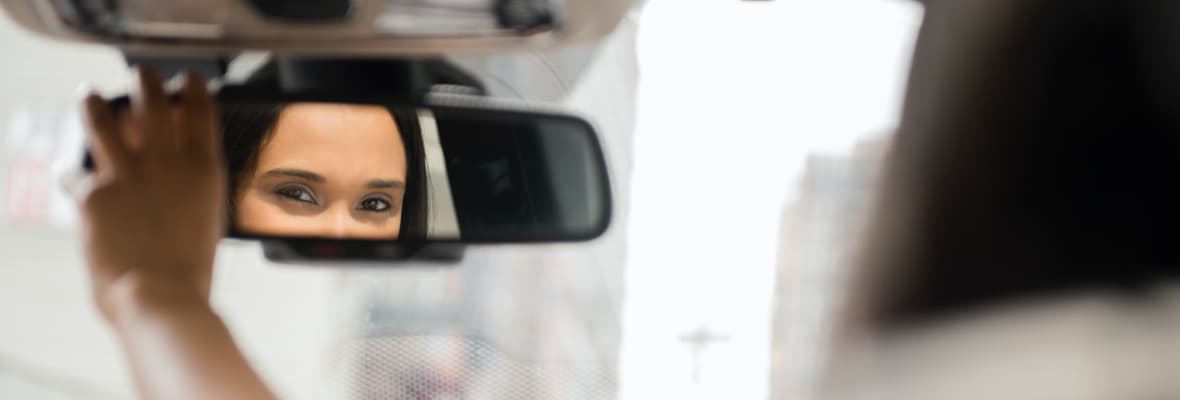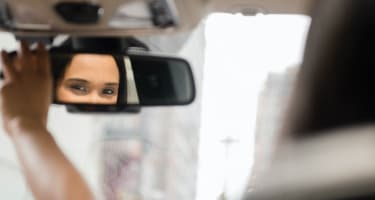Related articles
- 9 road safety tips for your teen learner driver
- Distracted driving facts
- 5 simple ways to make your car safer
- How to Safely Share the Road With Non-Motorists
- 9 tips for staying safe in service stations
- Child Car Seat Laws And Regulations
- How to reduce the risks to children of reversing cars
- Licensing of older drivers in Australia
- The must have car safety features in modern cars
- What cars have ISOFIX in Australia
- ANCAP safety ratings explained
- How to reverse park
- How to Avoid or Minimise Hail Damage to Your Car
- School road safety tips for families
- Staying safe in your car
- How to choose, install & adjust your children’s car seats
- Driving safety tips
- Give way rules - Who goes first?
- Sharing the Road Safely With Heavy Vehicles
- Do you know your road signs?
- What to do after a car accident
- What To Do in Event of a Crash with Wildlife
- How to drive safely in wet weather
- Why are young drivers considered high risk?
- Which Australian state has the strictest road rules?
- 10 Obscure road rules you didn’t know existed in Australia
- Which states and cities in Australia have the most motor vehicle thefts?
- Learner Driver Restrictions Australia
- Learning How to Drive
- Supervising a Learner Driver: What are the rules?
- Electric Scooter Laws in Australia
- School Road Safety for Kids
Disclaimer: This information is general in nature only. While Budget Direct has endeavoured to ensure the information we’ve relied on is accurate and current, we do not guarantee it. Budget Direct accepts no liability for this information.
It’s a seemingly unsolvable question: How best to adjust your car’s side-view mirrors.
For years drivers have been told to adjust them so they can see each of the vehicle’s rear corners while sitting normally at the wheel.
The ‘rear corner viewing setup’ is optimal for reversing into parking spaces.
But it has a major flaw: It leaves blind spots.
Hence the reason drivers are taught to look over their shoulders to check the blind spots before changing lanes or merging into traffic.
Mirrors are considered safety features. But using them in traffic means having our attention temporarily redirected to somewhere other than the front of the vehicle.
Considering around 32 percent of car crashes are rear-end collisions[1], looking over your shoulder to check the blind spots may sometimes have unintended consequences.
Active blind spot monitoring
Car makers like Volvo, Toyota, Audi, and Mazda have integrated blind-spot detection systems into some of their latest models.
A typical ‘active blind spot monitoring’ system uses one or more electronic detection devices mounted on or near the side-vision mirrors or rear bumper.
The devices send out either electromagnetic waves (usually in radar wavelengths) or take computer-processed images with a digital camera and analyse them.
They provide alerts — in the form of a flashing light or audible sound, for example — when other vehicles enter blind spots to the rear or side of equipped vehicles.
Delphi, a parts manufacturer, supplies their own active blind spot monitoring system, RSDS, to major car manufacturers.
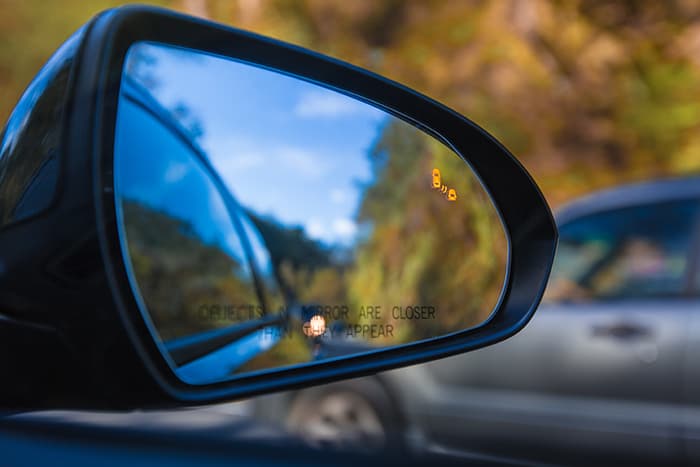
According to Delphi, the RSDS gives drivers more time to react to obstacles that may be difficult to see in the side-view mirrors.
Some of its features include blind-spot detection, lane change/merge assistance, a rear cross-traffic alert, and rear pre-crash sensing. Read more about the must-have car-safety features in modern cars.
But are active blind spot monitoring systems superior to the passive side-view mirrors used by generations of drivers?
Surprisingly, the answer is no, at least according to research and surveys motoring industry publications conducted in 2012.
Not only do active monitoring systems fail to improve the overall safety of equipped vehicles, some commentators fear reliance on them may reduce the effectiveness of a vehicle’s most important safety feature: A watchful driver.
How to align your car's mirrors
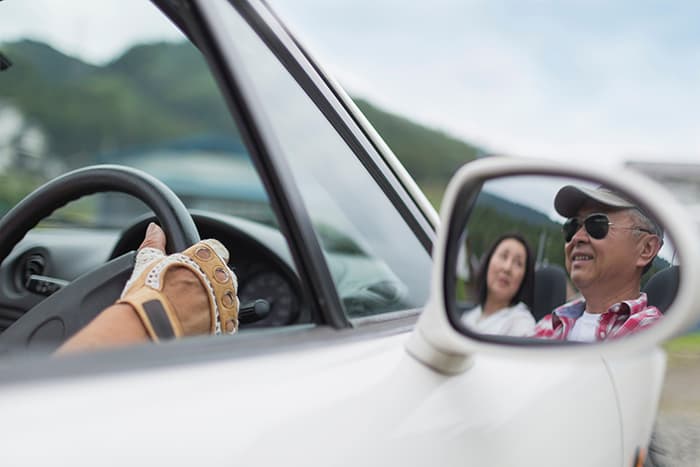
A new approach to mirror alignment that seems to be gaining popularity comes from a research paper published by the Society of Automotive Engineers (SAE) back in 1995.
The SAE-recommended method aligns the rear-vision and side-vision mirrors in a way that eliminates the blind spots at the four o’clock and eight o’clock positions.
Step-by-step video instructions for setting mirrors in this way can be found all over the internet.
Here’s a basic breakdown:
- While in normal posture in the driver’s seat, lean your head towards the driver’s window until you almost touch it, and then position the driver’s side-view mirror so you can just see the rear corner of the car in the mirror.
- Lean your head towards the passenger side until it aligns with the approximate centreline of the car (between the two front seats), at normal height. From there adjust the passenger side-view mirror so you can just see the other rear corner of the car.
- Adjust the rear-view mirror so it faces the centre of the rear window.
- While driving you will now notice that cars passing from directly behind will move across the rear-view mirror, and appear in the side-view mirror just as they leave the rear-view mirror. You may even notice some overlap.
- Notice that the side-view mirrors now capture a much broader view of the car’s periphery, such that it is no longer necessary to turn your head to scan adjacent lanes of traffic prior to changing lanes or merging.
Some critics say this setup eliminates the driver’s view of the rear corners, making them more prone to accidents while reversing.
But remember: Those corners are still visible when you tilt your head towards either side.
Admittedly, many reversing accidents happen in the driver’s own garage or driveway, so there’s a lot at stake, including the safety of your loved ones.
Find out how to reduce the risks to children of reversing cars.
Convex mirrors
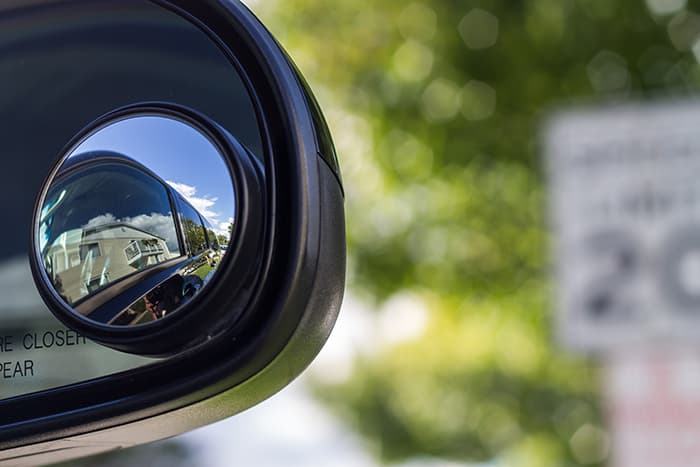
Another solution to blind spots are special convex mirrors installed in the corner of your car’s side-view mirrors, enabling you to see into areas the normal mirrors don’t allow you to.
These convex mirrors can be supplied by the manufacturer or you can buy them at an automotive store and install them yourself (though it’s advisable to get them professionally installed as their position is crucial).
Much of the risk of a reversing accident at home can also be mitigated with the installation of a convex mirror mounted in the garage or driveway.
Convex mirrors are inexpensive and, if mounted thoughtfully, give drivers a 160-degree field of view behind them.
Low-tech mirrors (convex or otherwise) are not only cheaper, they can be just as reliable, it would seem, as the high-tech solutions.
Sources
Related articles
- 9 road safety tips for your teen learner driver
- Distracted driving facts
- 5 simple ways to make your car safer
- How to Safely Share the Road With Non-Motorists
- 9 tips for staying safe in service stations
- Child Car Seat Laws And Regulations
- How to reduce the risks to children of reversing cars
- Licensing of older drivers in Australia
- The must have car safety features in modern cars
- What cars have ISOFIX in Australia
- ANCAP safety ratings explained
- How to reverse park
- How to Avoid or Minimise Hail Damage to Your Car
- School road safety tips for families
- Staying safe in your car
- How to choose, install & adjust your children’s car seats
- Driving safety tips
- Give way rules - Who goes first?
- Sharing the Road Safely With Heavy Vehicles
- Do you know your road signs?
- What to do after a car accident
- What To Do in Event of a Crash with Wildlife
- How to drive safely in wet weather
- Why are young drivers considered high risk?
- Which Australian state has the strictest road rules?
- 10 Obscure road rules you didn’t know existed in Australia
- Which states and cities in Australia have the most motor vehicle thefts?
- Learner Driver Restrictions Australia
- Learning How to Drive
- Supervising a Learner Driver: What are the rules?
- Electric Scooter Laws in Australia
- School Road Safety for Kids
